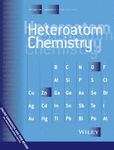A dual-modal red-emitting fluorescence probe for proteins based on modulation of AIE or TICT state
Abstract
A cyanine fluorophore 2-[4-N,N-diphenylaminostyryl]-β-naphthothiazolium propylsulfonate, N3, was synthesized. The asymmetric probe N3 displayed aggregation-induced emission (AIE) characteristic in DMSO/H2O mixtures, whereas it presented twisted intra-molecular charge transfer (TICT) non-emissive state in Dioxane/H2O (Diox/H2O) mixtures. Both the AIE and TICT state could be modulated by proteins, exhibiting switch effect. In DMSO/H2O mixtures with 90% water fractions (fw), protein molecules adsorbed upon the aggregated crystalline nanoparticles of N3 and spread over the surface, thus the strong fluorescence emission of N3 was quenched. The different degree of quenching among proteins revealed that the adsorption of proteins on N3 aggregate particles arose from both hydrophobic and electrostatic interactions. The quenched ratio (I0/I) vs the concentration of positively protein lysozyme (Lys) gave a Langmuir type curve. In Diox/H2O mixtures with 90% fw, the addition of bovine serum albumin (BSA) led to the reduction of non-emissive TICT state and made the fluorescence emission of N3 switch on. The large difference of N3 fluorescence emission toward BSA over other proteins including human serum albumin allowed us to establish a sensitive probe for BSA. An ON-OFF and OFF-ON dual-modal red-emitting fluorescence probe for proteins was established.




